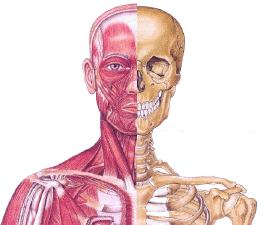 Anatomy Quiz
Alameda County
Mystery location
Anatomy Quiz
Alameda County
Mystery locationAnatomy Quiz Alameda County Mystery location
Planted by PrincessLea on July 21, 2004
terrain: easy - somewhat rough dirt/ mud path, more or less level; parking is 50c (get a ticket at any of the booths; although it says parking is for students only, you should be okay if you pay the fee)
roundtrip distance: 0.5 miles (out and back)
Over the course of taking all my prerequisites for nursing school, I spent 4 semesters at this campus. I planted this box on the last day of my last class in recognition of all the times I commuted up into these hills over the last 14 months. There are amazing views to be seen from this location, although strangely enough the best ones are from the student parking lot, while the classrooms are encased in dreary concrete blocks with hardly any windows. This spot is a hidden treasure and it merritt's your attention.
This letterbox honors my favorite class that I took at this school - Human Anatomy, but don't worry, you won't have to examine any cadavers to find it. Use your little grey cells to find the E and locate the cousin of a bobcat to start.
You will have lots of homework to do if you hope to pass this anatomy quiz! After determining the appropriate anatomical terms below, take the letters in the numbered positions to find your way.
Places you would find the cuneiform bones (1,2,3,4)
Substance stored in the gall bladder that emulsifies fat (1,4)
The blood vessel that connects the external iliac and popliteal arteries (1,4,5,11)
Technical terms for your "heartstrings" (1,3,10)
Muscle used to scowl (bring your eyebrows together) (1,3,14)
Smallest bone in the body (Latin name) (2,5)
Part of the cerebellum that is responsible for your sense of balance - it looks like a little ball of yarn (this is what gets confused when you drink too much alcohol) (1,3,15)
The long muscle that rotates the hip joint medially, helped by its short and big friends (2,5,8,10,14)
Midbrain nuclei that produces the neurotransmitter Dopamine (4,9,11,13)
2nd section of the small intestine, distinguishable on the microscopic level by intestinal crypts (4,5)
Outermost of the layers that cover the brain and and spinal cord (1,8,9)
Your calf muscle that is usually sore after hiking up too many steep mountains in search of a letterbox (also known as the belly of the knee) (5,6,7)
Protein that makes your skin tough and water resistant (1)
The largest nerve in your body (1,4,5)
The speech center of the brain, usually located in the left cerebral hemisphere (1,5,6,8)
The organ of hearing containing hair cells that are stimulated by sound vibrations (6,7)
Name of Cranial Nerve VIII (4,17,19,22)
Updated term for the structure previously referred to as the sphincter of Oddi (6,9,11,15)
Organ featuring a horizontal fissure as well as an oblique fissure (3,4,5)
Before you set out read the waiver of responsibility and disclaimer .